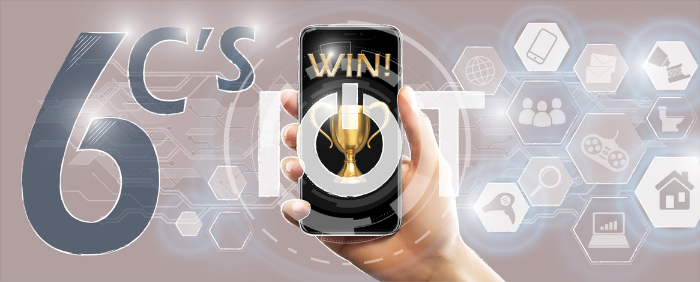Many innovation leaders I talk with are clear on the value of connected products and the Internet of Things (IoT) for their company, but they tell me their real challenge isn’t the corporate motivation. It’s finding a value proposition that customers really care about.
And that makes perfect sense. IoT systems need to detect, collect and share data about people’s environments, activities or information. So if the benefits aren’t compelling, why should people ‘connect’?
Here are the six most important benefits we’ve found companies use to develop successful connected product propositions.
1. Core Jobs
The first rule of connected products is “don’t talk about technology”. I’d go further and encourage you not to talk about new benefits! Most successful connected products don’t offer people something new they didn’t need yesterday. They deliver on something consumers already want to do (a core Job to be Done) – but they do it better, easier, faster or cheaper.
While it is tempting to target “new to the world”, most of the time this actually means “the world doesn’t need it (yet)” and the risks of creating a new market with a new technology are considerable.
The benefits to the customer might be functional (“don’t overcook my steak”) or emotional (“make me feel like a better cook”). But crucially the technology can’t be a gimmick; it must truly add value. Successful connected businesses are disruptive exactly because they deliver on those established “core jobs” in ways that are better, easier, faster or cheaper.
2. Customisation
We’re all individual, and as such, one of the most important benefits of connected products is personalisation. Whether this is achieved through our own input (I tell my fitness watch how much I weigh today) or automatically based on sensed data (my sound system suggests a new album I might like), we want “perfect for me”.
Your role as a brand is to figure out which potential customisation factors matter and then deliver them in a way that works seamlessly. A tip: don’t limit yourself to the specific data that you (or they) have. Consider what other unusual sources of data might be available in the wider customer’s ecosystem that you could access through partnership. Plus as you learn how they use your product, you will be better placed to better meet their needs in the future.
It’s no longer one size fits all. Which means everyone wins.
3. Connection
The boundaries of life are increasingly blurred. Home, work. Personal, professional. Physical, digital.
Consumers (and especially Gen Z) don’t want to think about distinctions, they want seamless “omnichannel” experiences. Meaning they want to be able to easily access what they need anytime, from anywhere.
Connected products offer this. Whether that’s checking your home security from the office, automatically uploading your photos to the cloud to avoid losing them, or accessing blood glucose levels via an app. The need for remote connection can be real or perceived, but as well as convenience, it also provides confidence.
People are busy. Life is full. Can you help them do their thing, but from anywhere, anytime?
4. Community/Club
The other day I noticed a hat brand with a community forum where customers share their latest adventure and connect with other hat users! A hat. We may sometimes be amazed at what people want to connect about – but humans are inherently social creatures.
Connected products can be a window through which consumers access their community. There’s something very appealing about being “part of the club” and you want their club to be yours. People want to interact with a brand in a way that makes them feel special, for example with regular “insider” news, discounts or early access to new products.
But counter to conventional wisdom, don’t obsess over the numbers. While Unicorn stock market valuations may famously value the size of the network, the quality of community is more important to the sustainability of your brand. A leader at a connected fitness brand who’s been particularly successful at this recently told me: “We chose to invest in the social aspects of our products, rather than just seeing them as a digital sales channel or chasing the network vanity statistics. We worked hard to create a ‘club’, treating people like they were part of the family.”
For you, the benefit is brand loyalty. For them, it’s a place to belong.
5 and 6: Cost and Convenience
It’s not rocket science. If by being connected, you save the customer enough time, or enough money, then you have a strong offering. But don’t just think about sticker price, time and money are not integers. For example, does connectivity allow the consumer to “snack” over time so they are making better use of their time, even if it might take longer overall? A colleague of mine now stores cleaning products around their house and finds short bursts of cleaning more effective than a big weekly clean.
And for finance, focus on affordability, not price. How can connected products allow consumers to spread their finances over a longer period of time (subscription), or exchange a fixed cost for a variable one (pay per use)?
While these models are not new, connected products make these easier than ever to engage with. And in our experience, a change in business model is often critical to allow the connected proposition to succeed.
What do you think?
So those are the key IOT consumer benefits I’ve seen companies succeed with – what’s missing from your experience? I’d love to hear your thoughts in the comments.
If you’d like to discuss specific examples and how they might help your business, please get in touch for an exploratory discussion at hello@18.170.153.187 or connect with me personally with a message on LinkedIn https://www.linkedin.com/in/alancucknell/

